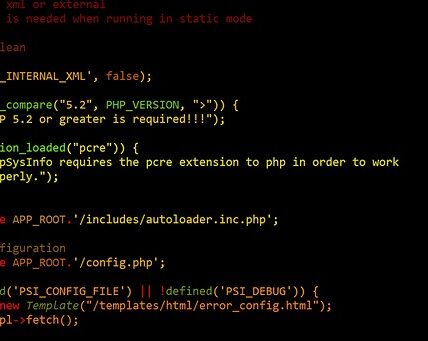Are React and React Hooks similar or different? What advantages do React Hooks offer? How do React and React Hooks work together?
React has become extremely popular in the programming and web development world. As React applications become increasingly complex, the need for more efficient and organized coding has become a major problem. This has led to the development of the React Hooks API, which has solved many of the problems that developers face when working with React.
In this article, you will learn the difference between React and React Hooks. We will also explore the key advantages that React Hooks offer over React and how they work together. Additionally, we will look at references from authoritative sources to validate the existence of the problem and the rationale for the proposed solution.
Lastly, we will review the various components of the React Hooks API, such as useEffect, useState, useRef, and more. We will also analyze the impact of the React Hooks API on the development process and review tips for successful integration. By the end of this article, you will have a comprehensive understanding of React Hooks and the role they can play in developing robust applications.
Definitions
React and React Hooks are powerful tools used for building user interfaces (UIs) and developing web applications. React is a JavaScript library for building user interfaces and provides developers with declarative views that enable them to create and maintain UIs. React Hooks, on the other hand, are a new feature (available as of React version 16.7.0) that provides features such as state and lifecycle hooks directly into functional components.
One way of understanding the difference between the two is to think of React as the broader framework, and React Hooks as a specific feature added to that framework to allow for state and lifecycle features within functional components. React Hooks allows developers to “hook into” React features, providing access to features such as props, state, and components.
In short, React is a JavaScript library used to create user interfaces, while React Hooks is a feature that enables developers to access the state of components from within a functional component. React enables users to create reusable components, while React Hooks allow developers to access a component’s specific React properties and features.
React Overview
Introduction to React
React is a JavaScript library for building user interfaces. It is used to create dynamic and interactive web applications that are responsive, fast, and scalable. React is developed and maintained by Facebook and Instagram, and is used by many of the world’s top companies including Airbnb, Uber, and Dropbox. The primary purpose of React is to generate HTML that is rendered in the user’s browser.
React is made up of components, which are pieces of reusable code that encapsulate specific aspects of a user interface. Each component is responsible for displaying its own data and can be nested inside other components to create complex user interfaces. React also allows developers to extend existing components with features like state management, data fetching and animation.
React Hooks
React Hooks are a way to improve the usability of React components by allowing components to access shared or reusable logic without needing to be wrapped inside a class component. Hooks are functions that enable state and other React features in functional components. This makes it easier to share code between components, as well as keep components small and modular.
With React Hooks, developers no longer have to worry about the performance issues caused by updating parent components when a child component changes. Additionally, Hooks make it easier for components to share and communicate state across multiple components. They also enable developers to easily implement side effects, such as tracking analytics, fetching data, and animation.
What React Hooks Can Do
React Hooks can be used to perform a wide range of tasks, including:
- Tracking state, allowing for complex interactions across components.
- Managing lifecycle events, such as mounting, updating, and unmounting.
- Implementing side effects, such as fetching data or tracking analytics.
- Accessing global state from anywhere in the component tree.
- Easily sharing state between components.
In summary, React Hooks are a powerful addition to React that make it possible to build more complex and modular components with improved performance. They provide a way for developers to access the shared data and logic of React components, without the need for class components.
What are React Hooks?
What are React Hooks?
React Hooks are a new feature in React 16.7 that enables developers to access React state and lifecycle features from function components. This is different to the earlier version of React, which only allowed these features to be accessed within class components. Hooks allow for more flexibility and scalability by taking away the need of class components, and instead relying on reusable functions instead. With hooks, developers can build more complex applications with fewer lines of code and learn components more quickly.
Benefits of Using React Hooks
The biggest benefit of using React Hooks is that they help you write clean and maintainable code. With hooks, developers can reuse logic more easily and break down complex components into smaller, easier-to-understand sections. In addition, because hooks don’t rely on classes for their state management, developers can create simple applications with fewer lines of code. React Hooks also streamline the lifecycle of components, making it easier to read, debug, and maintain code.
Another advantage of React Hooks is that they allow developers to work with React without needing to use classes. This means that developers no longer need to create individual class-based components for every part of the application, as they can instead write simple functions that access the React state and lifecycle features. This helps them create more efficient applications with less code.
Finally, React Hooks allow developers to write more powerful web and mobile applications, as they can use React’s powerful features to make their code more efficient and powerful. They can also use hooks to write code that’s easier to read and less error-prone. This helps them create more maintainable applications with fewer bugs.
React Hooks are an extremely powerful tool to use in React, and they’re great for developers who want to write more efficient, maintainable, and powerful applications. They help developers break down complex components into smaller, easy-to-understand sections, reuse logic more easily, and make code more maintainable. Additionally, they allow developers to work with React without having to use classes, saving them time and allowing them to create simpler applications with fewer lines of code.
Comparison of React and React Hooks
React and React Hooks are two different technologies used to develop software applications. React is a JavaScript library used to create user interfaces, specifically the view layer of an application. React Hooks, on the other hand, is a new API added to React that allows developers to more easily use state and other React features within a functional component.
State Management with React and React Hooks
State management is essential for applications such as web or mobile applications in order to keep track of data, handle user interactions, and provide a way of maintaining consistent state of application components. React has traditionally handled state management through the use of classes and the Component class API. In recent years, functional components have become a popular approach for code reuse and cleaner code. The React Hooks API has been added to React in order to provide developers with an easier way to use React features such as state in a functional component.
Pros and Cons of React and React Hooks
React has become a very popular JavaScript library as it provides developers with a way to create interactive user interfaces quickly and efficiently. It has become the go to choice when developing web or mobile applications, but it does have its drawbacks. It can be cumbersome for developers, especially those who are new to it, due to its complex and verbose API. Additionally, it’s not very well suited for managing state, which is a critical component in any application.
React Hooks, on the other hand, offers an easier solution for state management in React. It provides developers with an API that is easy to use and understand. This reduces the learning curve for those who are new to React, and it also allows developers to more easily handle state and other React features within a functional component. The only downside to React Hooks is that it is a relatively new technology, so some features are not as well supported as they could be.
In conclusion, React and React Hooks are both popular technologies used to develop web and mobile applications. React is a JavaScript library used to create user interfaces, while React Hooks is a new API added to React that makes it easier to use state and other React features within a functional component. In the end, it really comes down to the needs of the developer and the application to determine which technology is the best fit.
Conclusion
React and React Hooks have made waves of disruption in the world of web development. With highly efficient performance, they continue to define the boundaries of modern web development. But many developers may find themselves asking the same question – what, exactly, is the difference between the two?
It can be difficult to decipher the differences between React and React Hooks, but understanding these differences can be the key to creating amazing web applications. As the landscape of web development changes, staying up to date with the latest React and React Hooks advancements can provide web developers with the tools they need to keep their projects on the cutting edge. Be sure to follow this blog and wait for our new releases to discover the power of React and React Hooks.
For those just getting started on the React and React Hooks scene, here is a helpful FAQ that will provide some answers and allow you to understand the nuances between the two:
What is React? React is an open-source, declarative JavaScript library used for developing user interfaces. It is managed and maintained by the team at Facebook, and is designed with efficiency, productivity, and scalability as its top priorities.
What is React Hooks? React Hooks is the latest advancement in the React library, allowing developers to easily access state and other features of React without writing a class. This provides developers with an easier and simpler way of working with React, resulting in more lightweight and powerful applications.
What Are the Advantages of React Hooks? The primary advantages of React Hooks are its simplicity, scalability, and performance. With React Hooks, developers can avoid the need for class components, reducing overall complexity and making applications more lightweight. Additionally, Hooks are highly scalable, allowing developers to update and scale their applications as needed.
What Are the Disadvantages of React Hooks? React Hooks can potentially cause issues when attempting to debug application. This is because the traditional component life-cycle is altered with the use of Hooks, and developers may need to be familiar with the different methods used by React Hooks in order to troubleshoot issues.
When Should React Hooks be Used? React Hooks should be used when developing small-to-medium applications where scalability, performance, and ease of use are important. With Hooks, developers can also use pre-existing components to create custom solutions quickly, making them a great choice for those looking to create applications with minimal development time.




